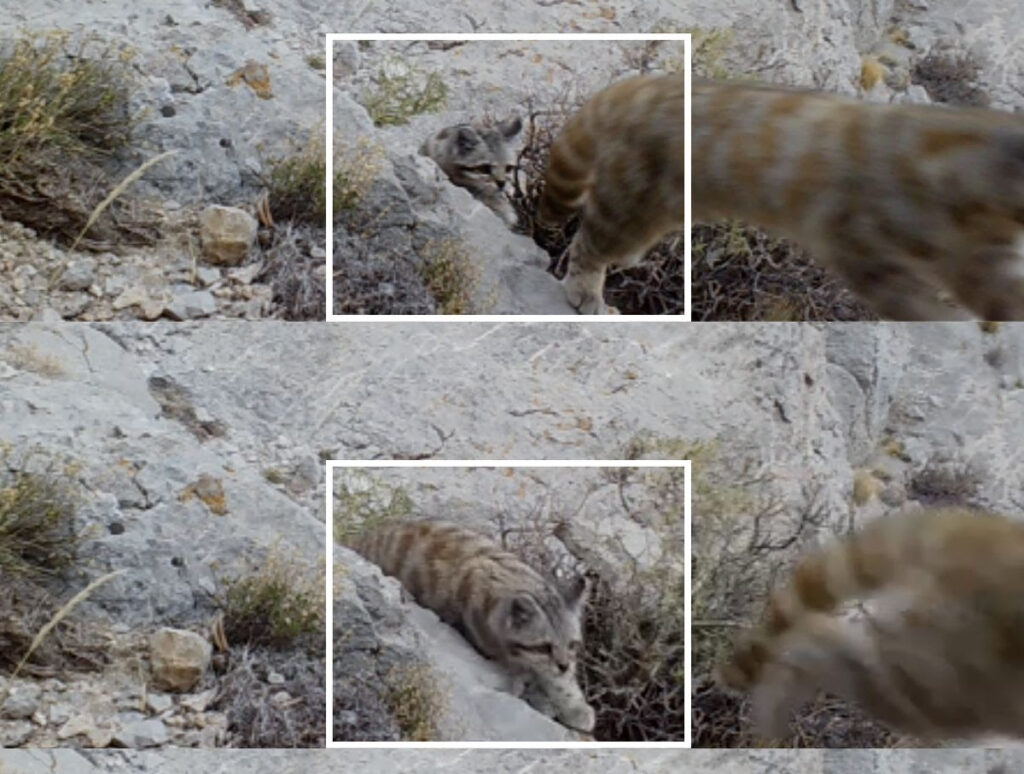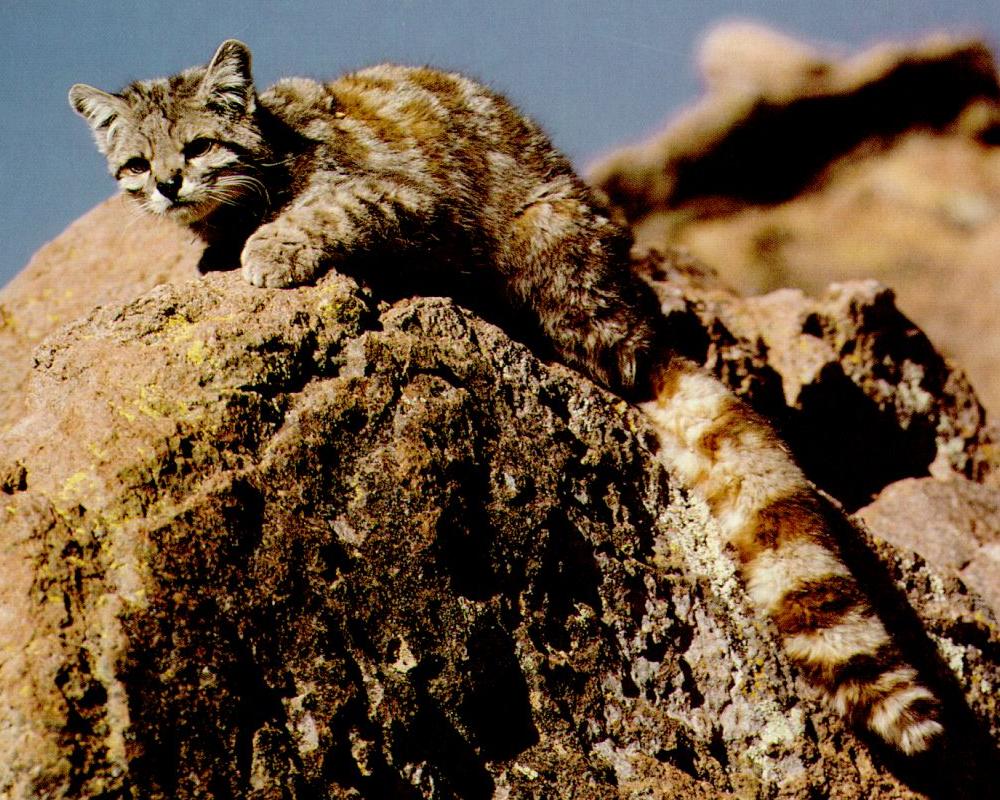This Thursday, February 20th is the Day of the **Andean cat** (*Leopardus jacobita*). It is a small feline characterized by its astonishing coat of **vertical stripes and a proportionally long tail**.
Its populations are scarce and fragmented in areas of **Argentina, Bolivia, Chile, and Peru**, making it one of the most **threatened felines in the world**.
Additionally, it is the only one in the Americas classified as “endangered” by the International Union for Conservation of Nature (**IUCN**).
Day of the Andean Cat: Unprecedented Record in Mendoza
The conservation organization **WCS Argentina** shared the latest video record of an Andean cat with its cub, which was seen in August 2024.

The images are from the **Malargüe** area, province of **Mendoza**. The record was achieved after several months of monitoring with “**camera traps**,” a method that involves placing cameras with motion sensors in places where the species is believed to inhabit and transit.
This is determined based on previous sighting records, in some cases, or indicated by local residents in others. Then, by examining the captured images, **the passage of these two specimens** could be identified.
“It is the first time we have recorded the presence of a cub, it is a huge conservation find because it implies that the **population is reproducing**, ensuring survival, contributing to its growth, and continuing the evolutionary history of the species,” said **María José Bolgeri**, a biologist and regenerative management manager at WCS Argentina.
“On the other hand, it shows that our conservation efforts are necessary to prevent its local disappearance,” she adds.
“Considering its **critical conservation status**, for almost 20 years we have been dedicated to monitoring its distribution inside and outside protected areas and have achieved over **75% of confirmed records** in the Patagonian steppe so far,” explains the specialist.
Threats to the Species
According to the organization, among the main threats facing this species in northern Patagonia is **retaliatory hunting** by livestock producers.

“Since being a carnivore, it **can affect herds** and roadkill on roads and paths,” they detail.
Other factors putting it at risk are **unsustainable livestock management**, which reduces the density of its main prey, the **viscacha**.
Also, habitat loss due to hydrocarbon and mineral extraction, and the **increase in temperature** and aridity in the region due to climate change.
Work for Andean Cat Conservation
Based on their scientific research and collaborative work with the **Andean Cat Alliance** and local communities, WCS Argentina promotes practices of **regenerative livestock farming** that contribute to the coexistence of the activity with the Andean cat and wildlife in general.
Among them, non-lethal methods to **prevent predation of herds**, such as the incorporation of livestock guardian dogs. They are raised alongside the livestock and mark territory, preventing wild carnivores like the Andean cat, foxes, and pumas from approaching.
Currently, the organization works with **75 producing families** in various parts of the country, such as **Mendoza, Neuquén, Río Negro, Chubut, and Santa Cruz**.
It also promoted the **incorporation of 84 livestock guardian dogs** and supported the introduction of another 150 by government agencies and producer associations.
By adopting this style of non-lethal methods along with herding techniques that allow pasture regeneration, natural fiber productions, and other livestock-derived products obtain the international **Wildlife Friendly®** certification.
This distinction has allowed many producers to increase the **sale value of their production by 15%**.
“Studies show that most producers consider that deterrent strategies effectively reduce losses due to predation,” says Bolgeri.
“We believe it is necessary to continue listening to their needs, achieving points of convergence between productive development and wildlife conservation,” she adds.
Do you already know our YouTube channel? Subscribe!

